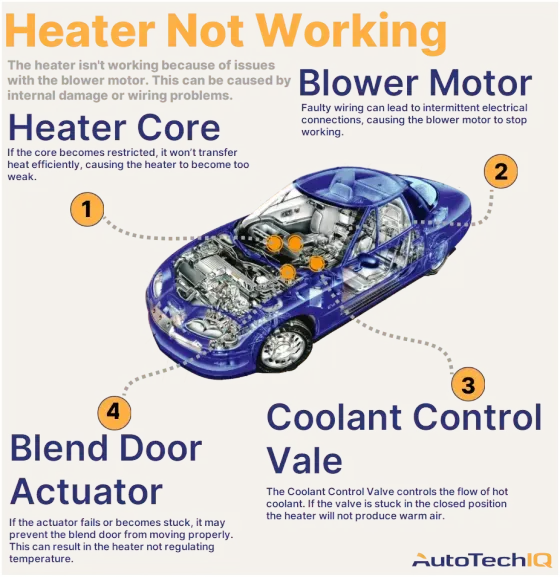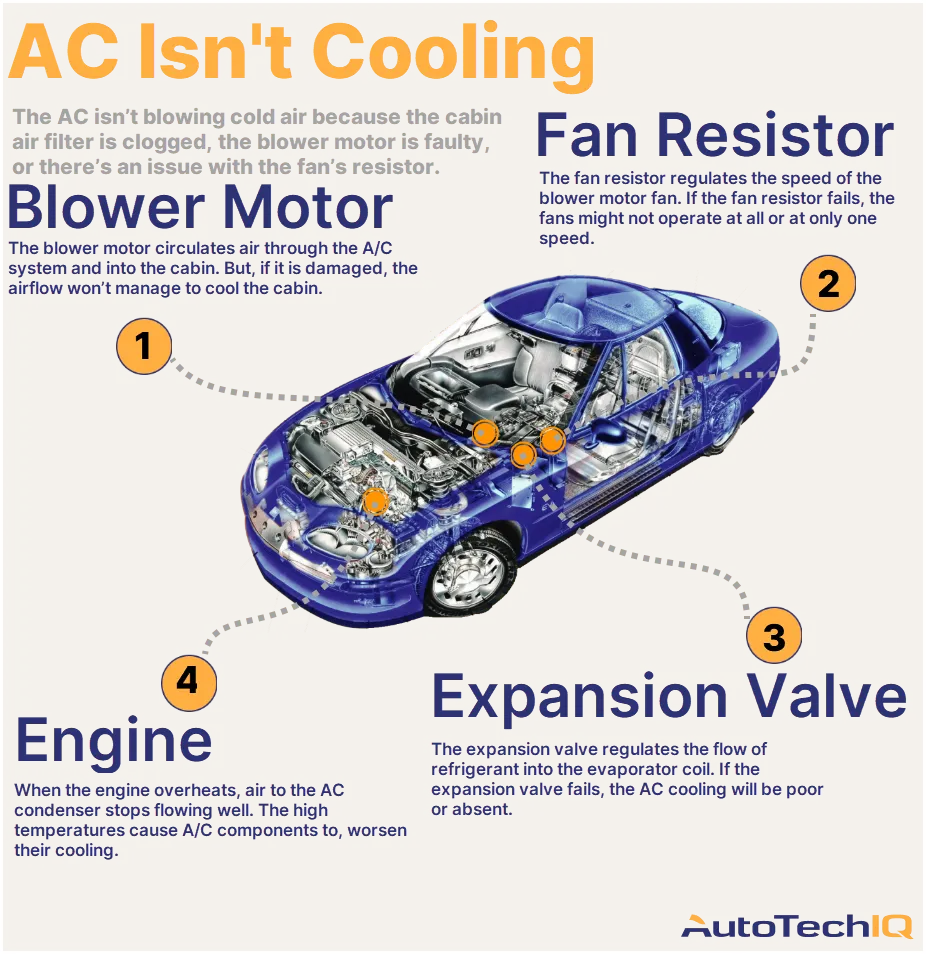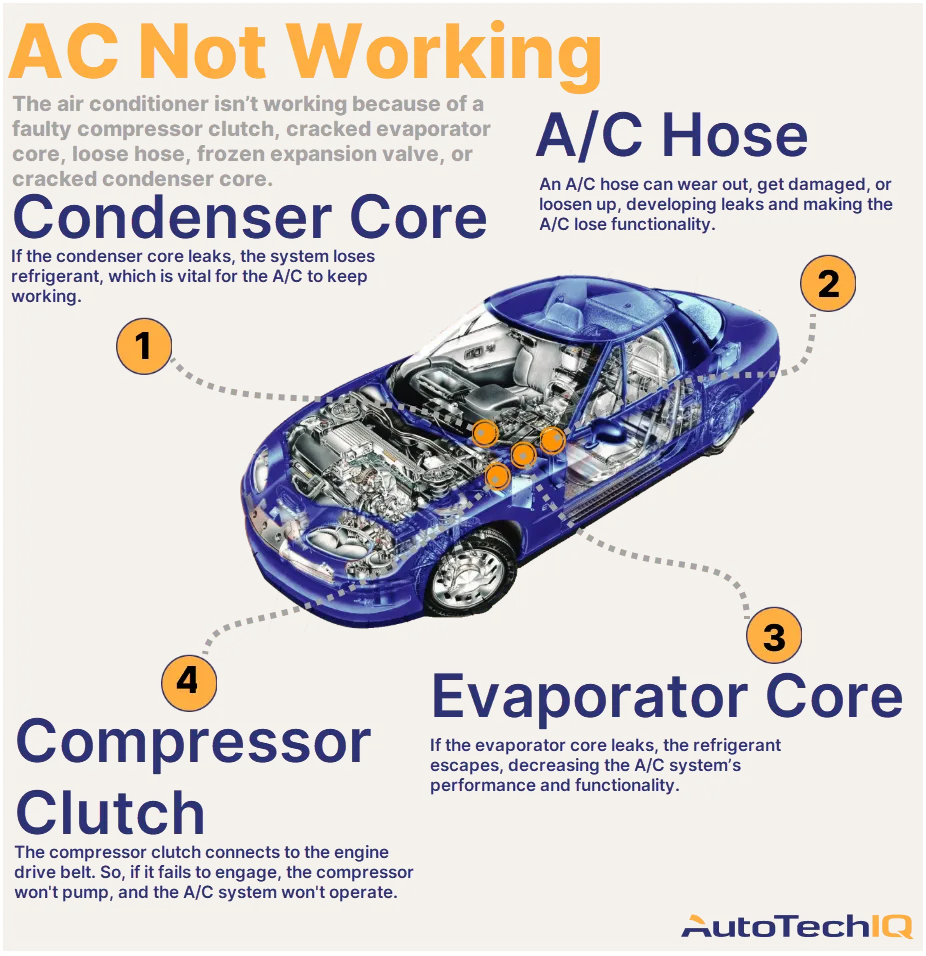
Is The Heater in Your Car Not Working?
The heater isn't working because of issues with the blower motor. This can be caused by internal damage or wiring problems preventing power from getting to the blower motor. However, in less common cases, the issue might be related to something different, like a restricted heater core, faulty blend door actuator, faulty coolant control valve, faulty heater fan, or a stuck-open thermostat.
Consider consulting a skilled expert who can pinpoint and recommend future actions to prevent and fix the broken car heater. This keeps your vehicle running smoothly, allowing you to enjoy a cozy ride worry-free. Remember, if left unattended, a minor glitch can snowball into a major headache.
Watch out: A car heater not blowing hot air can involve several different car systems! Ignoring heating problems can jeopardize your comfort, create further issues, and drain your wallet.


